
Arkanoid is a 1986 block breaker arcade game developed and published by Taito. In North America, it was published by Romstar. Controlling a paddle-like craft known as the Vaus, the player is tasked with clearing a formation of colorful blocks by deflecting a ball towards it without letting the ball leave the bottom edge of the playfield. Some blocks contain power-ups that have various effects, such as increasing the length of the Vaus, creating several additional balls, or equipping the Vaus with cannons. Other blocks may be indestructible or require multiple hits to break.

Krome Studios Melbourne, originally Beam Software, was an Australian video game development studio founded in 1980 by Alfred Milgrom and Naomi Besen and based in Melbourne, Australia. Initially formed to produce books and software to be published by Melbourne House, a company they had established in London in 1977, the studio operated independently from 1987 until 1999, when it was acquired by Infogrames, who changed the name to Infogrames Melbourne House Pty Ltd.. In 2006 the studio was sold to Krome Studios.

Operation Wolf is a light gun shooter arcade game developed by Taito and released in 1987. It was ported to many home systems.

Smash TV is a 1990 arcade video game created by Eugene Jarvis and Mark Turmell for Williams Electronics Games. It is a twin-stick shooter in the same vein as 1982's Robotron: 2084, which was also co-created by Jarvis. The Super Nintendo Entertainment System, Genesis, Master System, and Game Gear versions are titled Super Smash TV.

Laser Squad is a turn-based tactics video game, originally released for the ZX Spectrum and later for the Commodore 64, Amstrad CPC, MSX, Amiga, Sharp MZ-800 and Atari ST and PC computers between 1988 and 1992. It was designed by Julian Gollop and his team at Target Games and published by Blade Software, expanding on the ideas applied in their earlier Rebelstar series. Laser Squad originally came with five mission scenarios, with an expansion pack released for the 8-bit versions, containing a further two scenarios.
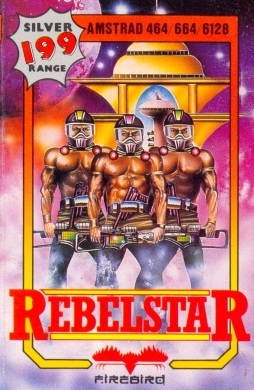
The Rebelstar games are a series of turn-based tactics video games designed by Julian Gollop. Rebelstar Raiders was published in 1984 by Red Shift for the ZX Spectrum. It was reworked in machine code as Rebelstar, published by Firebird in 1986. A sequel, Rebelstar II, was published in 1988 by Silverbird. Rebelstar, but not its sequel, was also adapted for the Amstrad CPC home computer.
Elite Systems is a British video game developer and publisher established in 1984 as Richard Wilcox Software. It is known for producing home computer conversions of popular arcade games. Elite also published compilations of games on the Hit-Pak label and budget price re-releases on the Encore label.
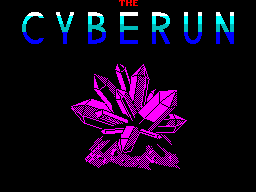
Cyberun is a ZX Spectrum video game by Ultimate Play the Game and published by U.S. Gold in 1986. Although not part of the Jetman series, it has similarities to Jetpac in that the player must construct their spaceship from parts, then seek out resources and power-ups.

Rick Dangerous 2 is a platform game developed by Core Design for the Amiga, Atari ST, Amstrad CPC, ZX Spectrum, Commodore 64, and MS-DOS. It was released in 1990 and published by Micro Style as a sequel to Rick Dangerous.
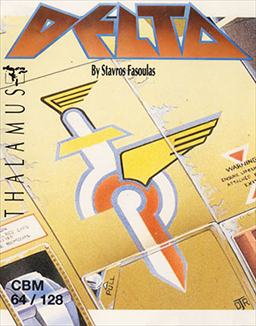
Delta is a horizontally scrolling shooter released for the Commodore 64 by Thalamus Ltd in 1987. It was programmed by Stavros Fasoulas and the music was written by Rob Hubbard. The game was published as Delta Patrol in the United States by Electronic Arts, for its Amazing Software line, in 1987 on the Commodore 64. It was also released for the ZX Spectrum in 1990 as Delta Charge.

A-Jax (エー・ジャックス) is a vertically scrolling shooter released in arcades by Konami in December 1987. There was a European release of the game called Typhoon, which is the name used for Imagine Software's ZX Spectrum, Amstrad CPC, and Commodore 64 ports.

Predator is a 1987 side-scrolling action game based on the 1987 film Predator, and the first game based on the franchise.
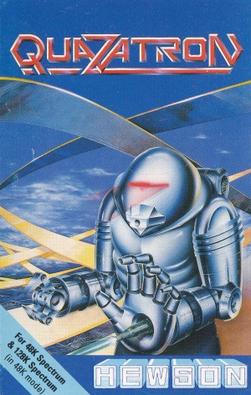
Quazatron is an action game developed by Graftgold, and released in 1986 by Hewson Consultants. It was designed by Steve Turner for the ZX Spectrum.

Action Force: International Heroes is a video game released by Virgin Games in 1987 for the ZX Spectrum and Commodore 64, and in 1988 for the Amstrad CPC. The game is set in the world of the Action Force toys by Hasbro. The ZX Spectrum version of the game differs notably from the Commodore and Amstrad versions.

Space Gun is a 1990 first-person shooter arcade game released by Taito. The game is set aboard a crippled space station that has been overrun by hostile alien creatures. The objective is to rescue human crew members while destroying the alien creatures. The game lets the player shoot limbs off the creatures, resulting in blood splatters.

HotShot is a Breakout style video game published in 1988 for Amiga, Amstrad CPC, Atari ST, Commodore 64, and ZX Spectrum, as well as MS-DOS compatible operating systems.

Cosmic Guerilla is a fixed shooter arcade video game developed by Universal and released 1979. A ZX Spectrum port was published by Crystal Computing in 1983.

Tenseiryuu: Saint Dragon is a horizontally scrolling shooter released as a coin-op by Jaleco in 1989. Ports to several home computer systems were published by Storm Entertainment in 1990. On February 6, 2020, Saint Dragon was released as part of Hamster's Arcade Archives lineup for the Nintendo Switch and PlayStation 4.

Soft & Cuddly is a horror action-adventure game released for the ZX Spectrum home computer. It was developed by John George Jones and published by The Power House in September 1987 in the United Kingdom and in early 1988 in Spain. The player assumes the role of a man armed with a laser gun and a jet pack, whose mother, the Android Queen, has been dismembered. The player's task is to locate the scattered body parts of the Android Queen and sew her back together.
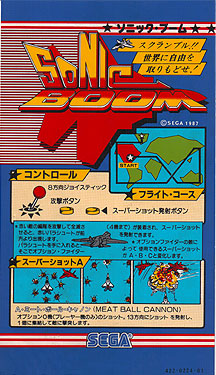
Sonic Boom is a vertical scrolling shooter developed by Sega and released in the arcades in 1987. Home computer versions for the Amiga, Atari ST, Amstrad CPC, Commodore 64 and ZX Spectrum were released in 1990 by Activision. The original arcade version was released on the Sega Astro City Mini console in 2021.




















